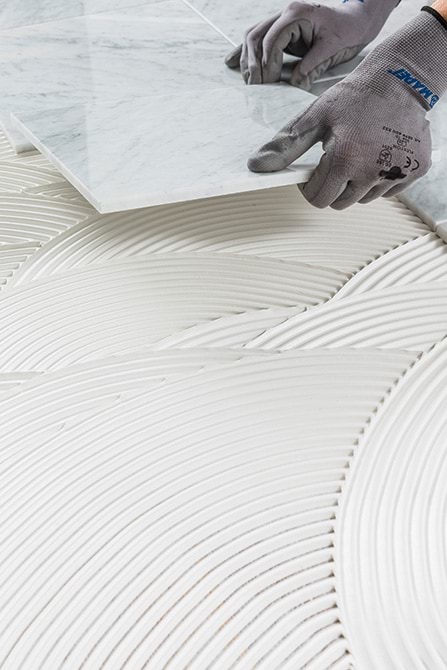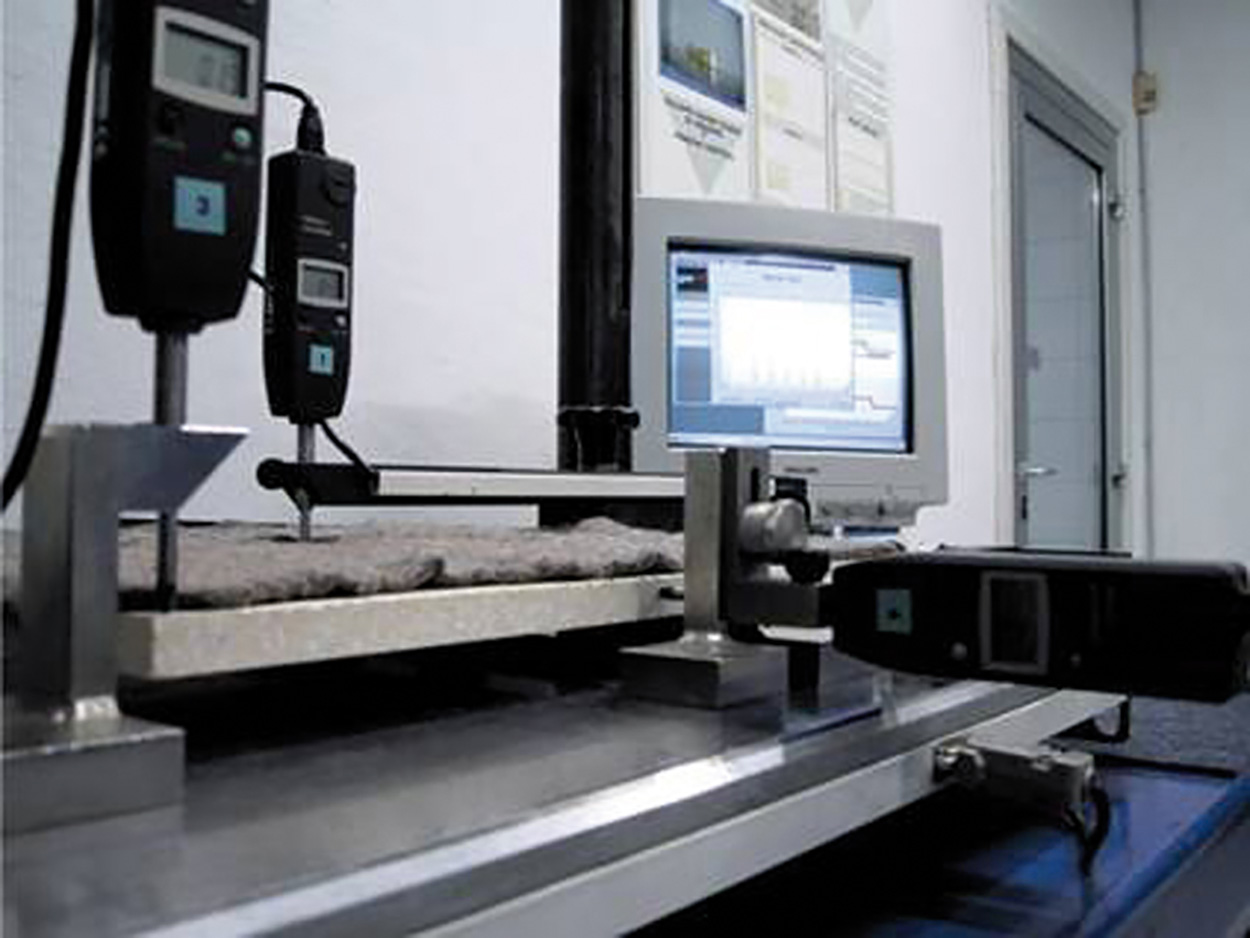
Installation of stone materials
Three common problems: water absorption, dimensional stability and the choice of the installation system.
Three common problems: water absorption, dimensional stability and the choice of the installation system. Let's find out more with our experts.
For example purposes, let’s choose three (excellent) materials: Carrara Marble, Red Verona Marble and Luserna Stone. But are they all really types of marble? Can I use the same bonding method for all three of them? How do they behave in damp conditions? These are all pretty basic questions but, as any stone installer knows only too well, apart from their commercial names, they are not the same at all. Their behavior in terms of compressive strength, abrasion resistance, water absorption and workability, for example, can vary quite considerably. And it is no mere coincidence that the reference norms divide stone materials into different families: marble, granite, travertine and natural stone (which includes everything not covered by the other definitions). Let’s look at each of the following three aspects separately: water absorption, dimensional stability and choosing the right installation system.
ARE STONE MATERIALS USED FOR FLOOR AND WALL COVERINGS IN THE RESIDENTIAL BUILDING SECTOR SENSITIVE TO CONTACT WITH WATER?
Some of them, yes. The presence of moisture underneath a marble floor, for example, can cause unsightly marks or stains in various colours to appear on the surface, such as yellow or red (which are often irreversible). In certain cases, the backs of slabs absorb so much water that a stone element can become permanently deformed. Where does the water underneath a floor covering come from? From a substrate that has not been dried correctly, for example, or if there is not an adequate vapour barrier to counteract rising damp. In certain particular cases, stone material may also absorb water contained in the adhesive itself.
DIMENSIONAL STABILITY TEST
The aim of this test is to understand the behaviour of the stone material to be installed when it comes into contact with water contained in the adhesive used for installation. This particular test method is contained in an annex to the relative Italian standard UNI 11714.1 regarding the installation of stone floor and wall coverings. How is the test performed? In simple terms, by positioning a slab of the selected material on a support connected to a series of high-precision sensors. The amount of water in the installation system is simulated on the back of the slab and, at regular intervals of several hours, the amount of movement in the material being tested is recorded. Some materials do not deform at all, while others have quite large levels of deformation. So what should we do?
WHICH INSTALLATION SYSTEM SHOULD BE CHOSEN?
If the stone material is dimensionally stable, a normal-setting installation system may be used. In this case, which system to use depends on other factors, such as the size of the slabs, the final area of use and particular site requirements and conditions. If the material is unstable when it comes into contact with water, on the other hand, it is necessary to opt for a rapid installation system. In so doing, the water contained in the adhesive will be quickly consumed by the cement and won’t be able to be absorbed by the natural stone. Rapid adhesives are classified by the letter F (fast), in compliance with European standard EN 12004. Amongst the Mapei installation systems, examples of these types are Elastorapid (C2FET S2) and GRANIRAPID (C2F S1). In certain particular conditions, such as when the stone material to be bonded has significant amounts of movement (≥ 6 mm), adhesive without water must be used. Mapei manufactures and distributes Keralastic epoxy-polyurethane adhesive containing no water (R2).
In consideration of the above, a few simple questions can prevent problems being encountered on site: is the material I am about to bond sensitive to moisture? Should I use a rapid-setting installation system? Is the substrate on which the material is to be installed suitable for the type of stone I have chosen?












